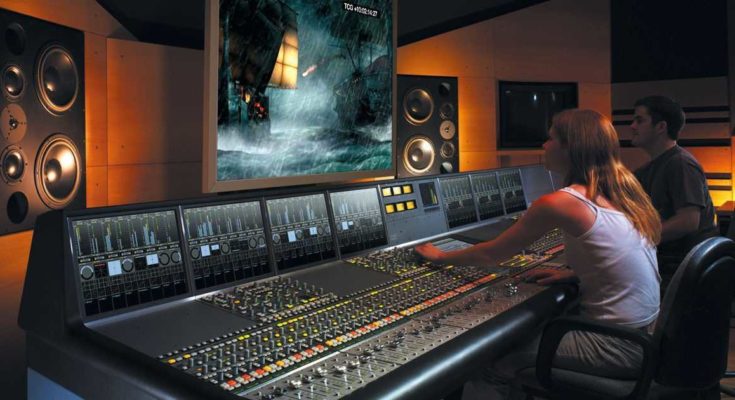Custom Sound Design in Animation Using AI Voices

Sound design is one of the most widely used techniques for creating audio in film, video, animation, multimedia, television and radio advertising, theater, and contemporary music genres.
However, while live-action projects often prefer using naturally recorded sounds in the background, an animation is created from scratch. These audio effects, from voices to random noise, are specifically created to accommodate what is happening in every frame of animation. Animation characters rely heavily on sound design to bring them to life, making it a crucial aspect of the storytelling process.
Luckily, AI technology can now streamline the sound design process for animation. This is a game-changer for smaller studios and independent artists as the costs, resources, and hours needed to create entire audio tracks are no longer a barrier to entry. Additionally, voice cloning for animation offers new possibilities for achieving diverse and authentic character voices, using a character voice generator, further enhancing the storytelling experience.
What does a sound designer do?
The combination of the words "sound design" may seem strange. Indeed, design is more often associated with the creation of the external appearance of objects. But sound — vibrations of air waves picked up by the human ear — cannot be recorded visually without the use of special instruments. Is it possible to construct or model the "look" of sound?
An interior designer creates the surrounding subject space in accordance with certain requirements of fashion, style, and the wishes of the customer. In the same way, a sound designer models a sound’s environment, its space, and saturates it with various sound elements. During this process, the designer is careful to respect the features of a particular project and its genre, the specifics of the on-screen narration, the features of acting characters, the artistic and figurative structure, etc. Animation characters also play a significant role in shaping the sound environment and require careful consideration in the sound design process.
A large number of technologically complex films, including science fiction, whose soundtracks are especially saturated with noise effects, gave way to the sound designer as an independent specialty. The sound designer sits at the intersection of the sound editor and sound engineer. The designer is also involved in sound recording, editing, and sound mixing (dubbing sound engineer). Character voice generator technology enhances storytelling by enabling sound designers to create diverse and authentic character voices.
The specifics of sound design as a profession lie in the designer's desire to use the means of designing, synthesizing, and recording sound to identify adequate solutions to the problems associated with the sound design of a visual range. In addition, they are expected to provide a practical result within a strictly defined production timeline.
Sound design for animation
One of the areas that constantly pushes the boundaries of sound design is animation. Leveraging sounds that bring an animation to life helps to make it feel more natural, engaging, and immersive.
Sound designers decide on sounds for specific animations to create the right atmosphere and communicate the story and characters to the audience. They might design sounds from scratch on the computer or record real-life sounds for use. They may also use layering, which is the process of combining multiple sounds to create a single new sound.
Animation is a wide and rapidly-developing industry, and not every studio can afford to implement every idea they have. Creating visuals, hiring voice actors, and getting through production and post-production processes all require a significant investment of time and resources. This can have the negative effect of forcing sound designers to compromise on their initial plans and expectations to achieve a result that fits within the constraints of the studio.
Some of the challenges with regard to sound design for animation include:
- Production process delays. Having to adjust a schedule around sound design slows down the entire production process. Moreover, sounds often have to be re-recorded due to recording interference.
- Adjusting voices and sounds. Making changes to a recording requires additional resources and often doubles the workload of engineers. It also bloats the process and requires scheduling actors for multiple sessions to re-record their voices.
- Recording child and animal voices. These voice actors are the most troublesome ones. The process of recording child and animal voices can take several days, and half of this time will be spent on things that are not connected with the process.
- Localization. So you’ve created an animated film for an English-speaking audience. However, to distribute your product worldwide, it needs to be translated into other languages.
AI voices for animation sound design
AI voices allow sound designers to reduce their working hours while following through with the initial plans for the animation they are working on.
AI technology for sound design helps with:
- Saving time. With voice cloning, there is no need to waste hours and days bringing a high-demand actor back to the recording studio over and over.
- Being flexible. It’s hard to schedule top actors for voiceover or dubbing work. AI voices allow you to scale any voice while giving you the flexibility you need to record new lines at any time.
- Recording actor’s in any language. Looking to capture an overseas audience? Voice AI technology allows you to record in any language.
- Resurrecting voices from the past. Maybe you want to add a historical voice to a project. AI voices allow sound engineers to use the voice of an iconic personality who has passed away.
- Replicating children’s voices. Voice AI technology allows an adult actor to scale a child actor’s voice to avoid aggravating the working hours and empower young voice actors.
- Adding dialog. Decided to add a few lines after a recording session has wrapped? Just turn on your microphone and start speaking — no need to call your actor back into the studio. Character voice AI simplifies the process, allowing for seamless integration of new lines with existing recordings.
Animators create entire worlds from scratch. Respeecher is here to give you full control over the aspects of voice logistics, including with voice cloning for animation.
Apply Respeecher to your project and get the chance to use our voice cloning tech pro-bono or with a significant discount. Fill out the form to enter.
FAQ
AI voice synthesis is a technology that generates realistic character voices and custom voiceovers using generative AI. In gaming, it's used to create dynamic character voices, streamline game localization, and enable gaming voice cloning for efficient voiceover production without needing to record every line manually.
Speech-to-speech voice synthesis allows game developers to reuse a voice while adapting it for different languages, emotions, and accents. This process enhances video game localization, speeds up voiceover production, and ensures dynamic character voices, ultimately improving development efficiency and reducing costs.
The Respeecher Voice Marketplace is a platform offering a wide selection of custom voiceovers and dynamic character voices. It allows developers to access voice cloning technology and license pre-recorded human and animal voices for various applications, including gaming voice cloning and video game localization.
Voice cloning enhances video game localization by enabling characters to speak multiple languages while maintaining their original voice and emotional tone. This process eliminates the need to re-record dialogues for each language, making the localization process faster and more cost-efficient while preserving character integrity.
Yes, AI voice synthesis can generate animal voices and child voices using an animal voice generator or by scaling an adult's voice to mimic a child's. This approach makes it easier and more flexible to incorporate diverse voices in games without needing specialized voice actors for each role.
Respeecher’s AI voice synthesis and gaming voice cloning technologies capture natural emotions and tonal subtleties. By analyzing and mimicking the original voice, the system enables dynamic character voices that convey authentic emotional depth, improving player immersion and enhancing the storytelling experience in games.
Glossary
AI voice synthesis
Character voice generator
A character voice generator uses AI voice synthesis to create dynamic character voices, enabling gaming voice cloning, custom voiceovers, and video game localization.
Speech-to-speech voice synthesis
Speech-to-speech voice synthesis uses AI voice synthesis to transform spoken input into a new voice, enabling gaming voice cloning, dynamic character voices, and custom voiceovers.
Gaming voice cloning
Gaming voice cloning uses AI voice synthesis to replicate voices for dynamic character voices, enabling custom voiceovers, video game localization, and game development AI tools.
Voice synthesizer
A voice synthesizer utilizes AI voice synthesis to generate dynamic character voices, enabling custom voiceovers, gaming voice cloning, and video game localization.

- voice synthesis
- voice cloning
- film industry
- artificial intelligence (AI)
- animation
- speech-to-speech (STS) voice synthesis
- synthetic voices
- synthetic film dubbing
- AI voice
- AI voices
- voice cloning speech synthesis
- voice actor
- actor
- voice actors
- AI-powered algorithm
- sound designer
- Voice acting
- Sound design
- audio effects
- AI technology
- sound editor
- sound engineer
- character voice ai
- ai character voice generator
- Respeecher for Business
- Film and Animation
- voice cloning for animation
- voice ai
- animation characters





